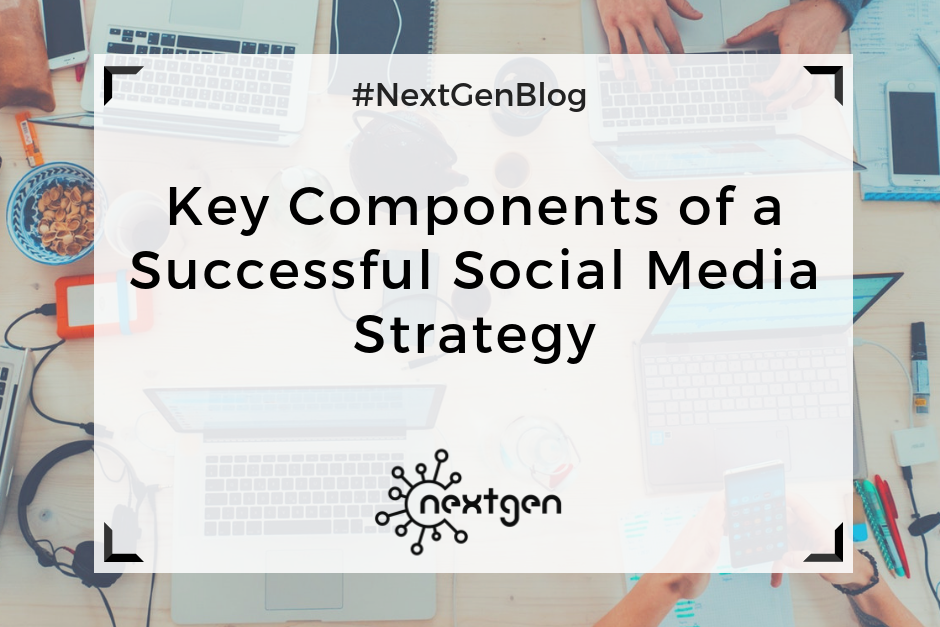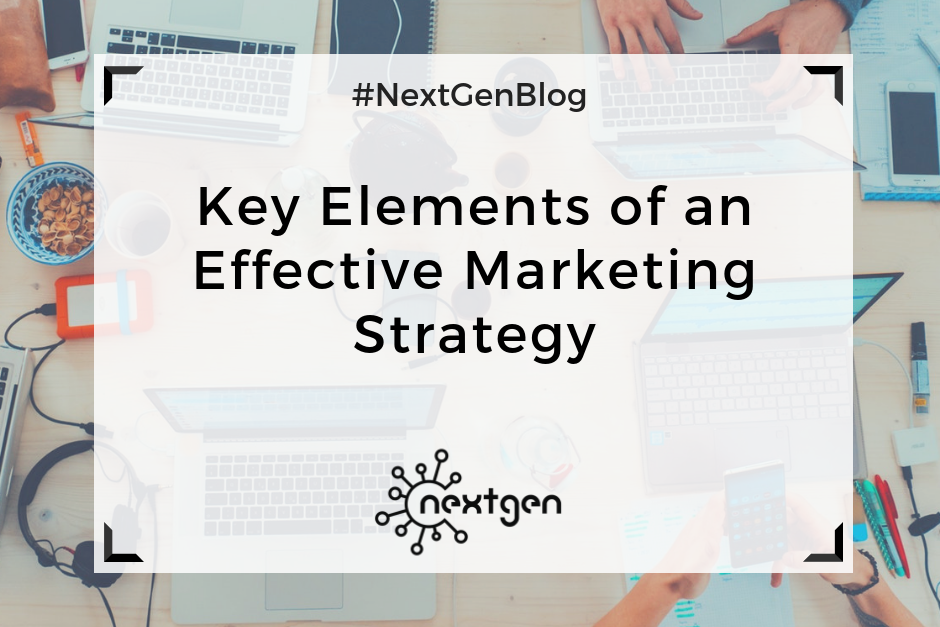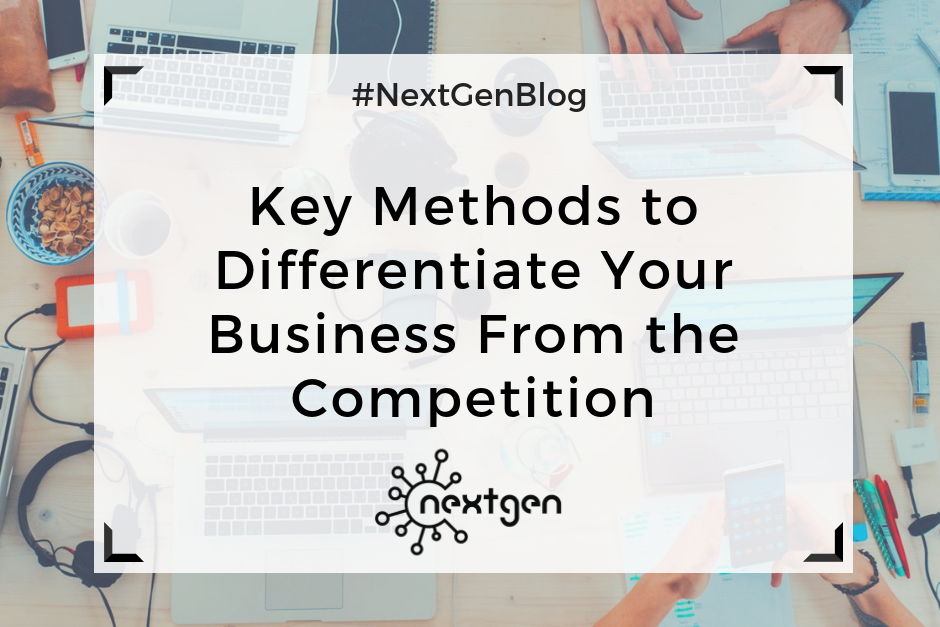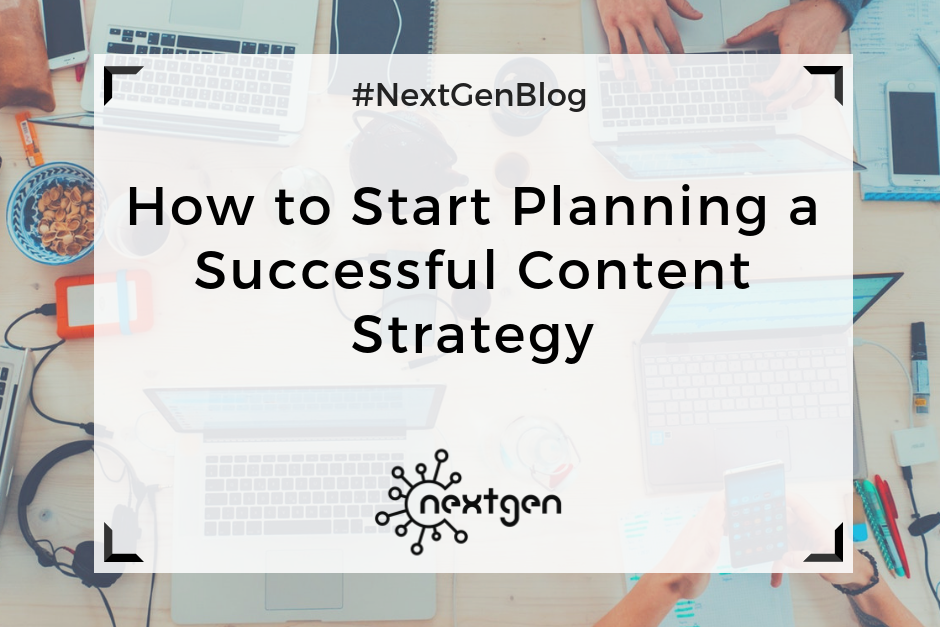
by Sofi | Aug 17, 2018 | Marketing Strategy, Social Media Marketing
Every business needs a solid marketing strategy to ensure that they’re meeting the needs of current and potential customers to the best of the company’s ability. In today’s digital world, utilizing social media platforms and creating a social media strategy is an important element of this overall marketing strategy. According to HostingFacts, there will be an estimated 2.62 billion social media users in 2018. Social media is one of the most powerful (and FREE) marketing tools for your business, so you need a strategy to use this tool effectively. Here are the key components of a successful social media strategy.
#1 Identify Ideal Customers
Your social media posts should speak to a specific audience, which should also be your ideal customers. Creating or using your existing buyer personas will help you define and target the right people in the right places at the right times with the right messages. This will also help you choose the right social media platforms as part of your strategy later on. To create a buyer persona, you need to identify your ideal customers’ demographics, interests, problems, likes, dislikes, and motivations. Then you can create posts that best appeal to them.
#2 Set Goals and Objectives
The point of your marketing strategy is to accomplish business goals. You cannot move forward without knowing what you are working toward. The best way to do this is to look at your business’s needs and identify what you want to achieve with your strategy. Then, decide how you want to use social media to achieve these objectives. However, do not try to tackle all of your objectives at once through social media or else the messages will be confusing for followers. Focus on one goal at a time and switch when necessary.
#3 Choose Your Platforms
Most social media users have accounts on multiple platforms, but not every platform is right for your business. To effectively reach your audience, you will want to utilize more than one network, but do not attempt to engage customers on all networks or you will spread yourself too thin. The goal is to stay active on the platform you do use. Each platform caters to specific kinds of content and draws different demographic groups. To avoid wasting time and effort on the wrong platform, use your buyer personas to choose the right platform. Another helpful exercise might be to create a customer survey to find out what social media sites your clients actively use.
#4 Create Content Plan
Catching the attention of your audience requires great content. There are three main components to consider when creating a content plan: type of content, time of posting, and frequency of posting. All three of these components are heavily impacted by your platform, and each social media site has a unique “sweet spot” for each. All content online is generally the most successful when it is visual, emotional, and useful. This can be used as a guideline when deciding what kinds of content to create.
#5 Assigning Team Roles
The first step of deciding how to implement this strategy is deciding whether your internal staff will head your social media strategy, you will outsource the work, or have a combination of the two. Having a clear understanding of who is responsible for what will increase productivity and prevent confusion or overlapping efforts. Your strategy should assign all of the necessary roles and outline the exact responsibilities and expectations of each role. There are many tools available online to help your team develop content on their own, track the analytics of your social accounts, and manage/assign tasks to your team.
#6 Decide on Budget
Social media can be a completely free resource for your marketing needs, but there are also ways to spend money on any budget to increase effectiveness. There are also other expenses to consider such as social media monitoring and content creation. Will you need a graphic designer? Will you need video production? Do you plan on buying ads? Make a list of the tools and services you need, and then decide on the budget required for your current strategy. You can adjust your strategy until it fits your ideal budget
#7 Track Analytics and Adjust
Once you have your social media strategy outlined, it’s time for action! Execute your plan, and wait for results. Analytics tracking is one of the most important things you can do to improve your social media marketing strategy over time because it shows you what kind of content and promotion strategies are working or not working. There are many tools available online to help you track the progress of your social media accounts and analyze the data. Continuously making changes in order to improve the effectiveness of your accounts should be the most important factor in your social media strategy.

by Sofi | Aug 10, 2018 | Marketing Strategy
Coming up with an effective marketing strategy is very important for the success of your business because it can help you get new customers, increase sales, and gain a sustainable advantage over your competition. Essentially, a marketing strategy details what you want to achieve for your business and a plan of how you’re going to achieve those things.
These are some key elements that you should include in your marketing strategy:
#1 Goals
When you create your strategy, the first thing you need to do is to clearly define your business and marketing goals. Your goals may include increasing profits, getting new customers, building brand awareness, or anything else you want to achieve for your business. Setting realistic goals will help you decide where to focus your marketing efforts.
#2 Segmentation, targeting, and positioning
Identifying your potential customers and their needs is an essential part of a successful marketing strategy. You can conduct customer research to find out which customer segments you need to address. Then, you should evaluate the attractiveness of each segment and decide which segments you are going to target. Finally, you should develop a positioning strategy for each of your target customer segments.
#3 Brand messaging
Brand messaging communicates the value of your brand to your target audience and should ultimately convince them to buy your products or services. A unique and powerful brand message is one that people can easily associate with your brand. So, make sure the message you craft tells a story that makes your brand noticeable and differentiates you from your competitors on the market.
#4 Communication with customers
Maintaining effective communication with your customers is crucial for your success. So, another important component of a good marketing strategy is planning your communication tactics. You should know when and how to communicate with your audience to build and maintain meaningful connections.
#5 Promotional Activities
Once you know your goals, identified the elements of the STP process, have a nicely crafted brand message, and planned your communication strategy–it’s time to plan how you are going to promote your business, products, and services to your audience. You can achieve this with any type of promotional activities, such as: advertising, public relations, sales promotions, digital marketing, etc.
#6 Monitoring and evaluation
You should constantly monitor and evaluate your marketing strategy to know what works and what doesn’t. This way you’ll be able to make more informed decisions in the future and improve your marketing strategy over time.
#7 Marketing plan
When you have your marketing strategy prepared, the next step is creating a marketing plan of how you’re going to execute that strategy. The marketing plan should detail all the marketing activities you’re going to undertake and when. You need to have both a good marketing strategy and a good marketing plan for your marketing to be effective.

by Sofi | Apr 13, 2018 | Marketing Strategy
Differentiation enables you to offer greater value to clients at a reasonable price, creating a situation that can increase the total profitability of your business. There are several methods to distinguish your business from competition, including product, service, channels of distribution, relationships, reputation/image, and price.
#1 Product Differentiation
Product differentiation is the most noticeable method. It includes actual physical and perceived differences, of which the latter can be shaped through advertising. Product differentiation may take the form of features, performance, efficacy (or the ability of the product to do what it is purported to do), meeting specifications, or a number of other criteria. This is the general area where most B2B marketers — and probably most consumer marketers as well — spend the majority of their time and dollars.
#2 Service Differentiation
Service differentiation contains not only distribution and clients service, but all additional supporting fundamentals of a business, such as: training, installation, and comfort of ordering. To many, these appear like the simple mechanisms of a business — the blocking and undertaking or the initial elements that do not require cleverness. For example, businesses like McDonald’s know how to differentiate on service. With rare exclusions, you will receive the identical product and the identical service at a McDonald’s in Texas that you will get in Georgia, Connecticut, or California. And in every location, the fries will be baked identical, have the identical amount of salt, and be served up likewise as fresh from the fryer.
#3 Distribution Differentiation
Channels of distribution are also an efficient means of differentiation. Distribution can deliver coverage or accessibility, instant access to know-how, greater ease of ordering, and better stages of clients or practical service. For numerous producers facing a fragmented market, it is not possible to influence the end user without the distribution function. Structuring materials, for instance, requires having a plan to somehow transfer them from factory plant to contractor. These products characteristically transfer through two stages of distribution counting master distributors, specialty dealers, and retailers.
#4 Relationship Differentiation
Relationship differentiation is also an effective element of differentiation. Employees and team members with customer interfaces can deliver and establish capability, civility, integrity, reliability, and receptiveness. Accountable for performing everyday client-facing communication, they are the connection between the product and client. If that connection breaks downs, the business is demolished.
In numerous businesses, the sales representative, CSR, or the technical service representative becomes a reliable associate of the customer’s team, confirming that the product is transported on time and works as it is supposed to, while undertaking any matters rapidly and precisely. Performance like this generates emotional bonds among the seller and customer.
This avenue of differentiation is nearly linked to service but directly targets the people. Clients desire to perform business with people, not an organization. Structuring this connection takes time but creates an extremely differentiated position. This is the best way for any business method to become more detailed and differentiated from others.

by Sofi | Jan 12, 2018 | Marketing Strategy
How can you be certain that the content reaches consumers, and what are the key steps to develop successful content strategy? Questions like these are extremely vital and support businesses preparing for consistent and profitable foundations of website traffic and new leads.
The dependable source of traffic and leads from your content will allow you to experiment with other marketing strategies to produce revenue. Moreover, your content will not only assist in engaging new leads — it will also educate your target prospects and create recognition for your brand.
Now, let’s learn how to start planning a successful content strategy.
#1 Set your goal
What’s your purpose for creating a content strategy? Why do you want to create a content strategy? Recognize your goals before you start planning, and it will set you on the right track
#2 Determine your customer persona
To create a successful content strategy, you need to clarify your buyer persona. Buyer personas tell us significant characteristics about individuals such as their drive, what they value in a product, and why they stay loyal to the same brands over time. By defining your target audience, you can create more suitable content that they’ll be interested to read and convert on. There are numerous approaches to researching customer data, including following audiences on social media and keyword research to determine what customers are searching.
#3 Adjust format and channel
The kind of content you select to produce should always be aligned with its main purpose and the distribution channel. Personas dictate the best content format. Asking questions about your customer – such as how do they find new products, or what a typical day look like – will result in higher relevancy, and, therefore more significant engagement.
#4 Create an editorial calendar
The people accountable for content within an organization must plan out content for the upcoming weeks, months and year. The editorial calendar assists in keeping teams on the same page and making authors responsible for their work. An editorial calendar should contain content ideas and dates, as well as comprehensive data on accountability and details about distribution.
#5 Set KPI’s
Another vital part of an editorial calendar is the performance measurement. This means defining important performance indicators to determine the success of a generated content. Because content aims to reach customers at different points in the buying phase, it’s also significant to establish KPI’s according to the location of the customer at that time. For instance, if you are determining content in terms of engagement, a KPI could be social shares or video views. Nevertheless, this method does not define success in other aspects, such as conversion or lead generation. Other than assisting you to track and validate the content you produce, setting KPI’s can also be beneficial for informing future content.
#6 Define a content management system
Establish a system where you can manage your content. The most important parts of content management include: content formation, content publication, and content analytics. Some of the content system options include CoSchedule, WordPress, and HubSpot software.





